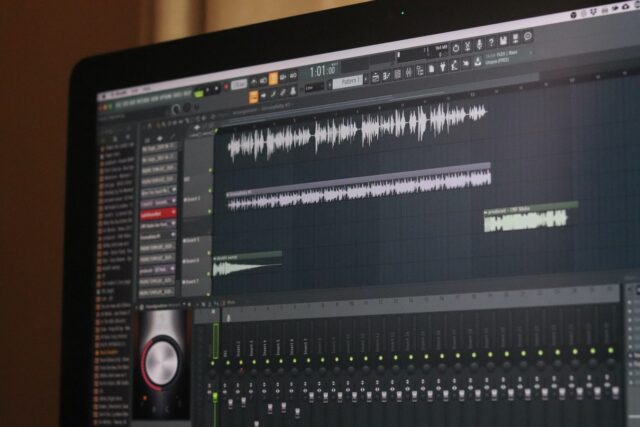
VST plugins have changed the way in which music producers and DJs create music. By using different kinds of effects and instrumental plugins, music recordings have become more experimental.
Without having to mimic or recreate sounds by recording actual instruments or warping sound frequencies, plugins do all of that for you. By the push of a button you can recreate an entire orchestra, a musical genre, or create an experimental piece.
If you are already clued up on plugins and are looking for something more specific like a Saxophone plugin, then you should consider a few different factors. Whether it’s an instrumental or effect VST you are after, chances are you’ll find loads of options on the market. Which ones are the best? Read along for a guide on choosing the best saxophone VST plugin and installation process.
What exactly is VST Plugin (Saxophone)?

When you are looking for a saxophone Virtual Studio Technology plugin, then you have to look for a high-quality saxophone mimicking sound. These plugins are created to mimic real saxophone sounds. Instead of recording different keys played on the real brass instrument, you can create certain articulated sounds and key switches by using a saxophone VST plugin.
Some plugins use advanced mathematical and logistical calculations to create sound and audio created by real instruments. In order for a music producer to achieve these real sounds, they can use different buttons, knobs, and sliders on their sound boards.
Experienced musical producers use complex plugins which they can automize and change to achieve different vibratos and effects. In this resource you will find more information regarding these specific plugins.
Different Types

When you want to create musical compositions where it sounds as if many saxophones are playing together, then you should master using all four different types. In modern music, four major types are used; Soprano, Alt, Tenor, and Baritone.
In a full-ensemble one will find these four different sax musicians, it’s to create music and sounds on all scales. Let’s have a deeper look at the different four and what ranges they are in.
Soprano
The smallest instrument out of the group that can reach high notes ranging from A♭3 to E6. Sometimes, these sounds can be confused to those of a clarinet, but the small sax is definitely part of the four-man ensemble. Alto
This instrument has a slightly lower range than the soprano, with notes ranging from D♭3 to A♭5. The dark tone of its notes is a great accompaniment in modern music. Tenor
Even though the Tenor sax looks almost identical to the Alto, it has a much lower range. A full octave lower than the Soprano with notes ranging from A♭2 to E5.
Baritone
The Baritone is the lowest ranging sax out of the four, with a range from C2 to A4. Sometimes known as the Bari Sax it’s a traditional instrument that produces full rounded sounds.
Additionally, music producers can also invest in higher and lower sax plugins known as the Contrabass (lower than Baritone) and Sopranino (higher than Soprano).
Using these four types of Saxophone plugins will give your musical composition much more depth and vibrancy. When you invest in the best VST effects and instruments you’ll be able to create high-quality products.
How do you master a Saxophone VST Plugin?

Learning how to use a sax plugin isn’t as easy as using other software. You have to put in real effort in order for it to sound realistic. This is because it requires a more detailed approach compared to other effects.
Having knowledge about the instrument and its different ranges will definitely come in handy when you create this piece of music. It’s part of a producer’s skillset to be able to put themselves into the mind of the sax player, to achieve different notes and phrases.
It’s important to use different automations on your tech boards to articulate different sounds that are naturally produced by the instrument. Unlike other plugins, learning how to master a saxophone plugin is much trickier. To avoid producing an artificial sounding product, you have to use different automations and articulations to create a convincing piece.
To make sure that you apply your knowledge of plugins correctly to take your work to a whole new level, stay in the loop by following guides as stated here.
How do I Install Plugin?
Installing a plugin is a very easy process, especially if you already have the necessary music software, sound equipment, and tech. Installing the plugin on different types of computers might differ from each other, but overall the following process will be applied:

Step 1
Download the VST plugin onto your computer. This can be from a purchased file or a website.
Step 2
In most cases the file will be zipped. Unzip the file using the correct software and store the .dll somewhere where it’s easily accessible.
Step 3
Go into your music software and rescan your plugin directory. The plugin will appear in your library ready to use.

One thing to definitely keep in mind when installing plugins, especially those found free on the internet, is to not install any suspicious links or software. Installing software that claims to be free might put your computer at risk. So, ensure that you have a decent anti-virus installed or rather purchase higher quality plugins than opting for free ones.
Finding high quality saxophone VST plugins can be quite difficult. There is almost no chance that you’ll find a great option without having to pay a fee for it.
Alternatively, you can purchase a horn selection from a software developer and enjoy the saxophone parts within the selection. Buying a pack with different orchestral instruments in it, will be a great addition to your plugin library.
Using saxophone sounds in songs make a significant difference in the overall production and end product.









